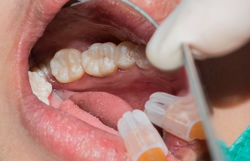One of the most vexing problems in dentistry nowadays revolves around the use of silver fillings (A.K.A. amalgams) in people’s mouths. The question is, do we really need to take out the old mercury-laden silver fillings for fear of health complications and find a replacement? Or are there better restorative dentistry options that don’t pose any potential problems to overall health?
In a survey conducted in the US, there were 72% who, surprisingly, didn’t know that silver fillings contained mercury. When they did find out, 92% of the respondents would’ve loved to be educated about the potential mercury problems when the fillings were first placed.
What is Mercury?
First and foremost, mercury is a potent neurotoxin and, at certain levels, it can cause neurological issues, autoimmune disease, chronic illnesses and mental disorders. The hot seat question right now is whether an unknown quantity of mercury vapor in silver fillings at a constant exposure poses a great threat to your overall health.
Mercury in Amalgam Fillings

Amalgams are known to consist of 50% mercury and a mixture of silver, tin, and copper. Studies have found that the amount of mercury vapor from amalgam can vary, measuring as little as 1-3 ug/day (micrograms/day) to as much as 27ug/day. This translates to 3% to 68% of recommended workplace air quality standards.
What this means is that, at high levels – and with continuous exposure – we could say that the levels mentioned above are unhealthy.
The WHO (World Health Organization) has stated that the exposure to mercury vapor can significantly increase beyond this number due to personal habits like teeth grinding (bruxism), chewing gum and drinking carbonated drinks. Such activities may lead to a fivefold increase in mercury levels.
Furthermore, there are a number of issues of water contamination from removing the silver fillings and the ensuing environmental impact as the mercury finds its way into the water supply.
Ceramic Fillings: A Recommended Alternative to Amalgam

Ceramic fillings are made up of a mixture of materials, usually plastic and ceramic, to help create a natural tooth-colored filling. These natural-looking fillings can be used in treating cavities and tooth decay, regardless of the tooth’s placement in the mouth.
Some advantages of using ceramic composite fillings include the following:
- These fillings can naturally blend in with your surrounding teeth, so there are no visible signs of dental work having been performed in the first place
- No metals or mercury are used to create the filling, so there are less health risks involved with composite fillings
- There’s a lowered chance of experiencing post-treatment tooth sensitivity
- Ceramic fillings make it easier to see signs of tooth decay in the future as the decay can stand out against the white composite fillings
- The decreased likelihood that the tooth will crack
These are just some of the brief details you need to know about why amalgam can destroy your teeth and threaten your health, and how ceramic can be an amazing replacement for it. Feel free to ask your holistic dentist to expound further on the subject, or visit the nearest holistic dental centre today.





